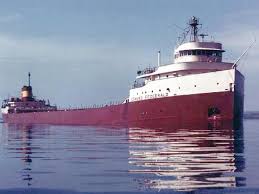
Introduction
The Edmund Fitzgerald, a Great Lakes freighter, is etched into the annals of maritime history due to its tragic sinking on November 10, 1975, during a fierce storm on Lake Superior. This event not only claimed the lives of all 29 crew members but also became a poignant symbol of the dangers of Great Lakes shipping. The story of the Edmund Fitzgerald resonates widely, underlining the perilous nature of maritime navigation in the region and the ever-present force of nature.
The Sinking of the Edmund Fitzgerald
The Edmund Fitzgerald was launched in 1958 and was one of the largest ships operating on the Great Lakes, known for its capacity to carry taconite pellets from mines in Minnesota to steel mills in Detroit. On that fateful November day in 1975, the ship encountered a severe storm, bringing winds of over 60 mph and waves that soared to 25 feet. Despite the severe weather, the crew continued their journey until they made their last transmission, reporting that the ship was taking on water and listing.
Shortly after this transmission, the Edmund Fitzgerald sank in the waters of Lake Superior, resting at a depth of 530 feet. The U.S. Coast Guard launched a search operation, but the wreckage was not discovered until 1976, when the ship was located by a team led by Dr. William Fitzhugh.
The Aftermath and Legacy
The tragedy of the Edmund Fitzgerald was immortalized in popular culture, notably by the song “The Wreck of the Edmund Fitzgerald” by Gordon Lightfoot, which deeply resonated with the public and brought greater awareness to the perils of maritime travel. The event raised questions about safety standards and regulations on the Great Lakes, leading to improvements in weather reporting and vessel regulations.
In addition to being a significant maritime disaster, the story of the Edmund Fitzgerald represents ongoing discussions about the labor and lives of those who work in maritime professions. It has become emblematic of the Great Lakes shipping industry, capturing public interest and maintaining its relevance to this day.
Conclusion
The Edmund Fitzgerald remains a powerful reminder of respect for nature and the inherent risks of shipping on the Great Lakes. The loss of its crew marked a watershed moment in maritime history, prompting advances in safety and regulations that continue to shape the industry. As we remember the tragedy of the Edmund Fitzgerald, it is also crucial to reflect on the broader implications of this event and its profound impact on maritime safety in North America.



